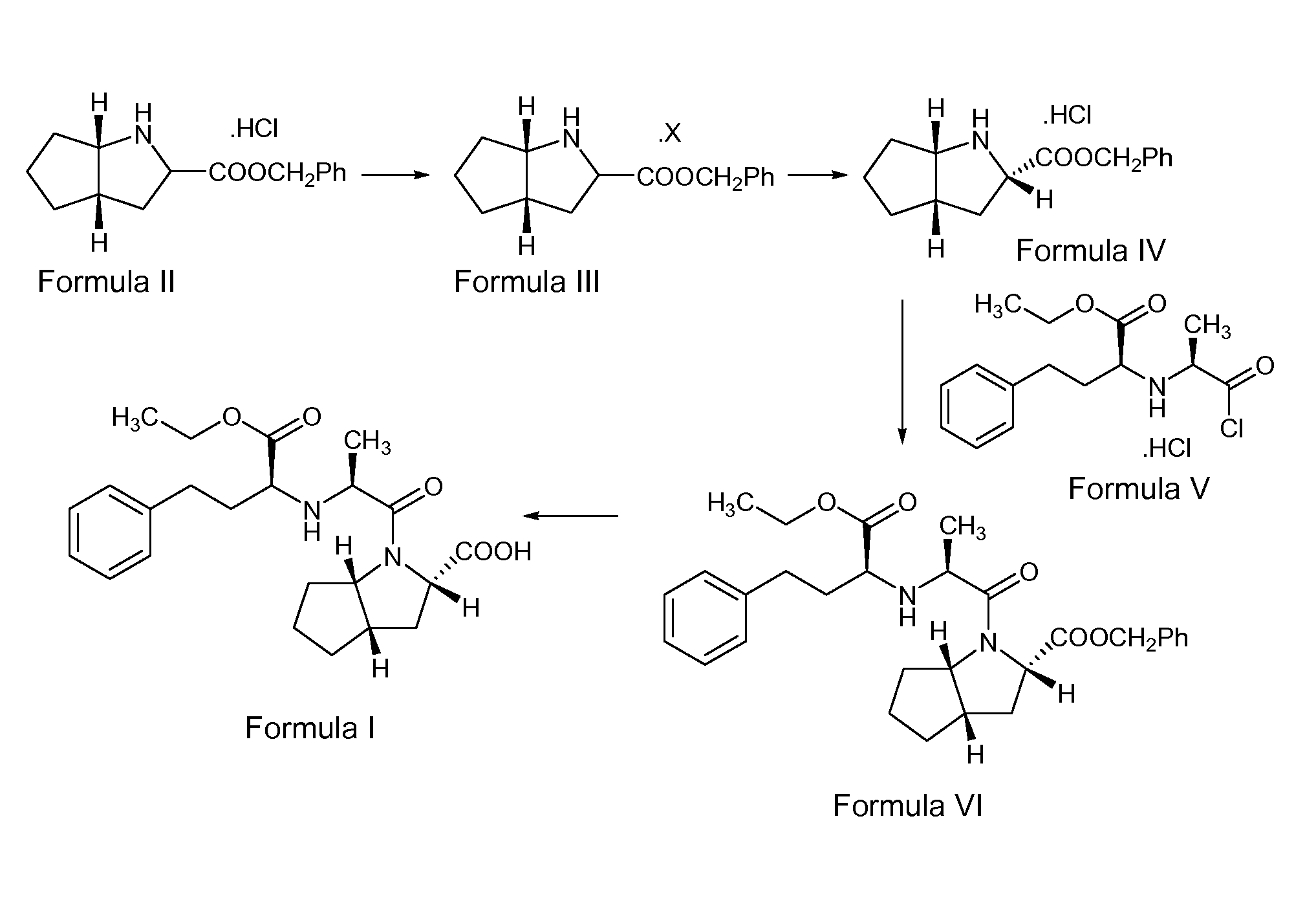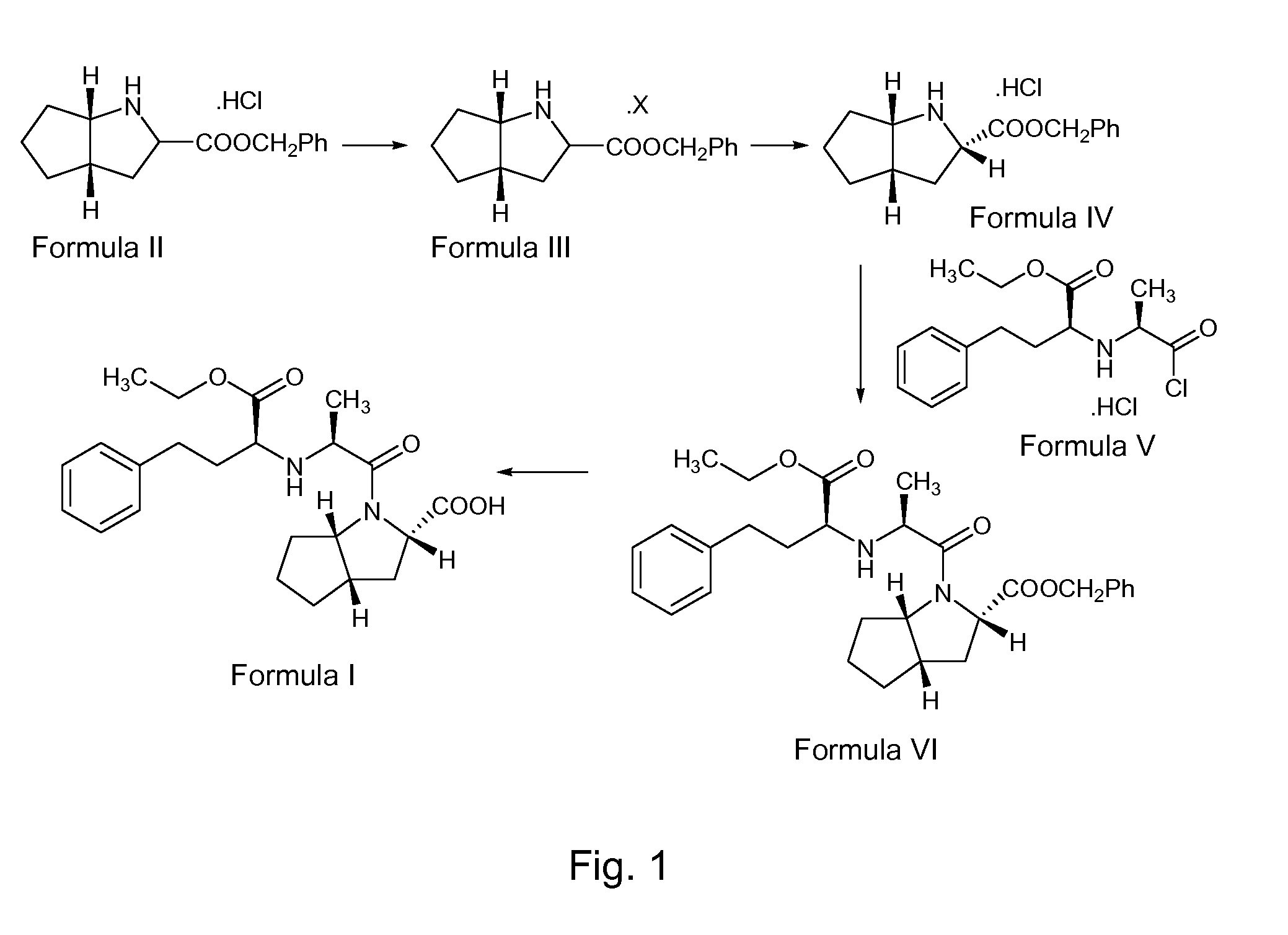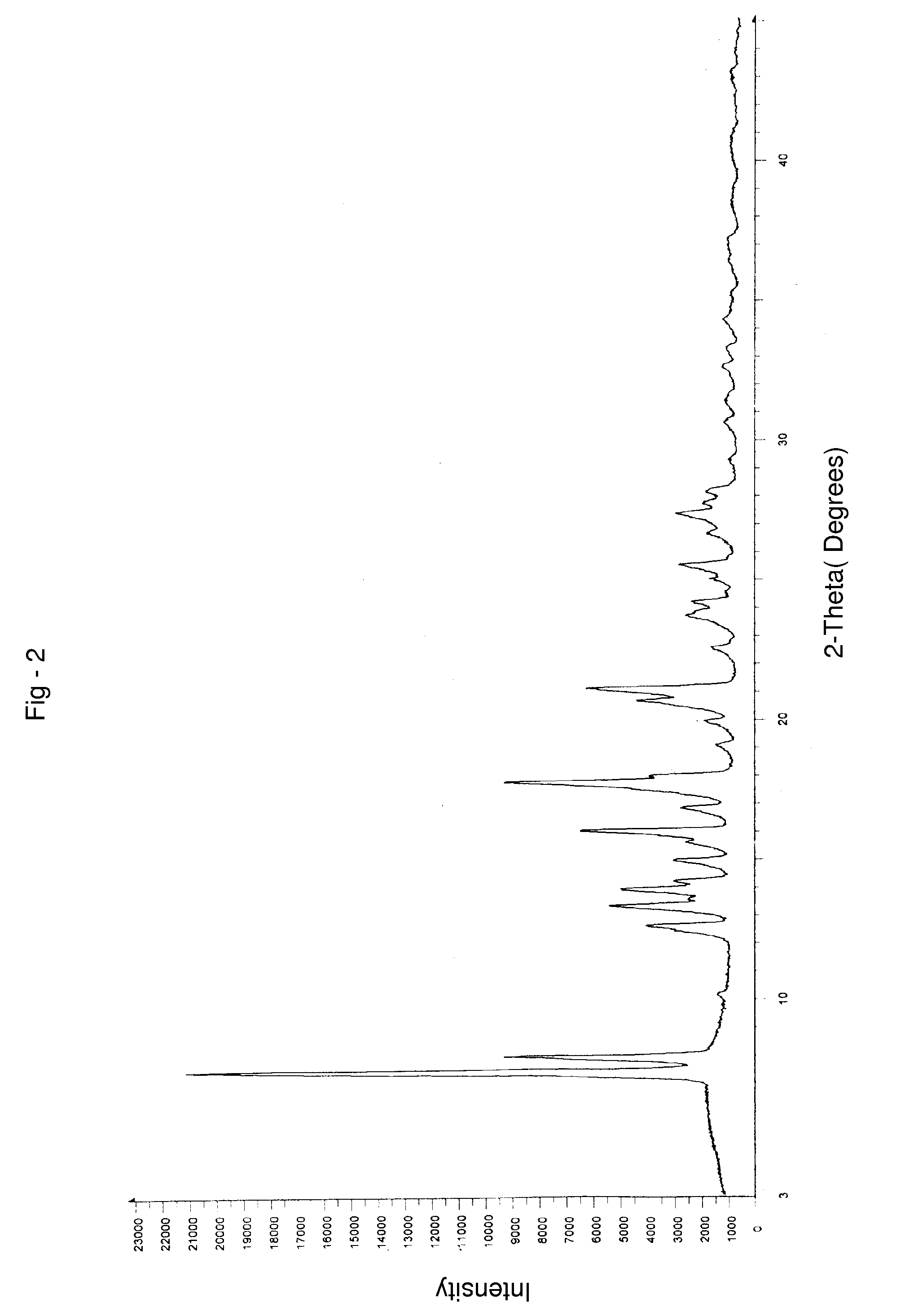Preparation of ramipril and stable pharmaceutical compositions
a technology of stable pharmaceutical composition and ramipril, which is applied in the field of preparation of ramipril, can solve the problems of low yield, difficult removal of many impurities, and contaminated final product, and achieve the effect of minimizing the hydrolysis effect of ace inhibitor and ramipril
- Summary
- Abstract
- Description
- Claims
- Application Information
AI Technical Summary
Benefits of technology
Problems solved by technology
Method used
Image
Examples
example 1
Preparation of the S,S,S-Diasteromeric Salt of 2-Azabicyclo[3,3,0]-Octane-3-Carboxylic Acid Benzyl Ester (Formula III)
[0169] 100 g of 2-Azabicyclo[3,3,0]-octane-3-carboxylic acid benzyl ester hydrochloride of Formula II was taken into a clean and dry 4 neck round bottom flask containing 400 ml of ethyl acetate. The mixture was stirred for 10 minutes. A solution of 25.6 g of sodium hydroxide in 128 ml of water was added slowly to the above mixture. The organic layer was separated. The aqueous layer was extracted into 200 ml of ethyl acetate. The combined organic layer was filtered through a celite bed, and the bed was washed with 100 ml of ethyl acetate. The combined organic layer was distilled at 50° C. under a vacuum of 300 mm Hg to give a residue.
[0170] 54 g of L-(+)-mandelic acid was taken into a clean and dry round bottom flask containing 350 ml of ethyl acetate and stirred for 10 minutes. The residue obtained above was added slowly to the solution of madelic acid at 28° C. an...
example 2
Preparation of the S,S,S-Diasteromeric Salt of 2-Azabicyclo[3,3,0]-Octane-3-Carboxylic Acid Benzyl Ester (Formula III)
[0172] 100 kg of 2-Azabicyclo[3,3,0]-octane-3-carboxylic acid benzyl ester hydrochloride of Formula II was take into a reactor, 400 liters of ethyl acetate was added and the mixture was stirred for 10 minutes. A solution of 25.6 kg of sodium hydroxide flakes in 128 liters of water was added to the above mixture slowly. The reaction mixture was checked for clear dissolution. After clear dissolution was obtained, the reaction mass was allowed to settle for 20 minutes, and the organic layer was separated. The aqueous layer was extracted into 200 liters of ethyl acetate, followed by extraction into 200 liters of ethyl acetate in two equal portions. The organic layer was distilled completely below a temperature of 57° C. under a vacuum of 600 mm Hg to get a residue. The residue was added to a solution of 53.94 kg of mandelic acid in 350 liters of ethyl acetate at 22° C. ...
example 3
Preparation of (S,S,S)-Azabicyclo[3,3,0]-Octane3-Carboxylic Acid Benzyl Ester Hydrochloride (Formula IV)
[0173] 55 g of the S,S,S -diastereomeric salt of 2-azabicyclo[3,3,0]-octane-carboxylic acid benzyl ester of Formula III was taken into a round bottom flask containing 450 ml of dichloromethane. The mixture was stirred for 10 minutes at 25° C. A solution of 11.2 g of sodium hydroxide in 45 ml of water was added to the above reaction mass at 0-3° C. The reaction mixture was maintained at 0-3° C. for 15 minutes, and then the organic layer was separated. The resultant aqueous layer was washed with 165 ml of dichloromethane in three equal lots. The pH of the aqueous layer was adjusted to 2.5 using 15.4 ml of aqueous hydrochloric acid. The resultant reaction solution was stirred for about 3 hours at 0-3° C. The separated solid was filtered and washed with 110 ml of dichloromethane, and the wet solid was dried at 65° C. under a vacuum of 350 mm Hg for 7 hours to afford 36.2 g of title c...
PUM
| Property | Measurement | Unit |
|---|---|---|
| Fraction | aaaaa | aaaaa |
| Fraction | aaaaa | aaaaa |
| Percent by mass | aaaaa | aaaaa |
Abstract
Description
Claims
Application Information
 Login to View More
Login to View More - R&D
- Intellectual Property
- Life Sciences
- Materials
- Tech Scout
- Unparalleled Data Quality
- Higher Quality Content
- 60% Fewer Hallucinations
Browse by: Latest US Patents, China's latest patents, Technical Efficacy Thesaurus, Application Domain, Technology Topic, Popular Technical Reports.
© 2025 PatSnap. All rights reserved.Legal|Privacy policy|Modern Slavery Act Transparency Statement|Sitemap|About US| Contact US: help@patsnap.com



